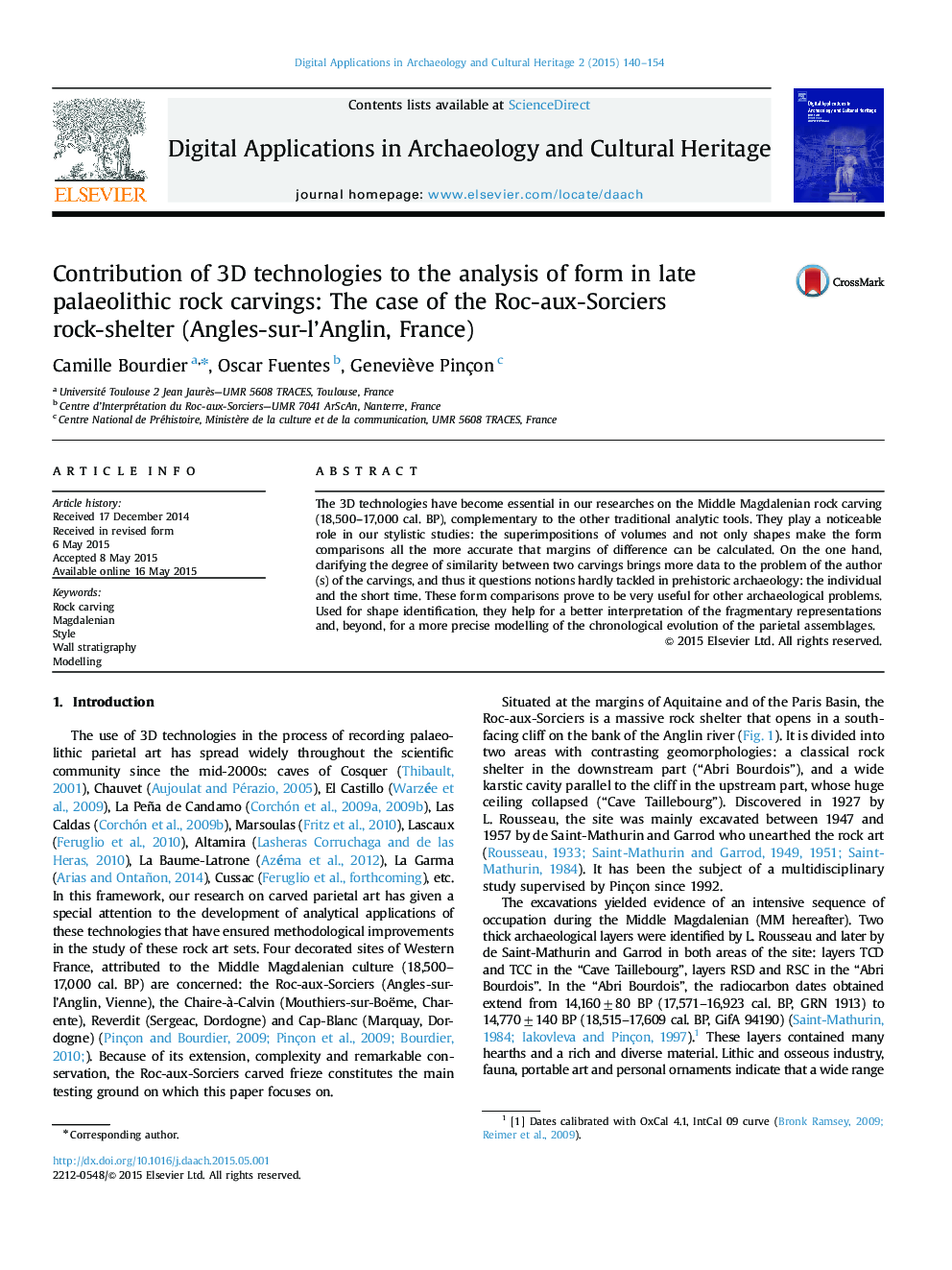| کد مقاله | کد نشریه | سال انتشار | مقاله انگلیسی | نسخه تمام متن |
|---|---|---|---|---|
| 108046 | 161835 | 2015 | 15 صفحه PDF | دانلود رایگان |
• We examine the contribution of 3D technologies in the study of a Magdalenian carved frieze (recording, analysis, modelling).
• 3D technologies as tools for stylistic analysis (morphometry and volumetry, comparisons of form).
• 3D comparisons of form question the issue of authorship.
• 3D technologies to help precise and model the successive rock art assemblages of the wall stratigraphy.
The 3D technologies have become essential in our researches on the Middle Magdalenian rock carving (18,500–17,000 cal. BP), complementary to the other traditional analytic tools. They play a noticeable role in our stylistic studies: the superimpositions of volumes and not only shapes make the form comparisons all the more accurate that margins of difference can be calculated. On the one hand, clarifying the degree of similarity between two carvings brings more data to the problem of the author(s) of the carvings, and thus it questions notions hardly tackled in prehistoric archaeology: the individual and the short time. These form comparisons prove to be very useful for other archaeological problems. Used for shape identification, they help for a better interpretation of the fragmentary representations and, beyond, for a more precise modelling of the chronological evolution of the parietal assemblages.
Figure optionsDownload as PowerPoint slide
Journal: Digital Applications in Archaeology and Cultural Heritage - Volume 2, Issues 2–3, 2015, Pages 140–154
